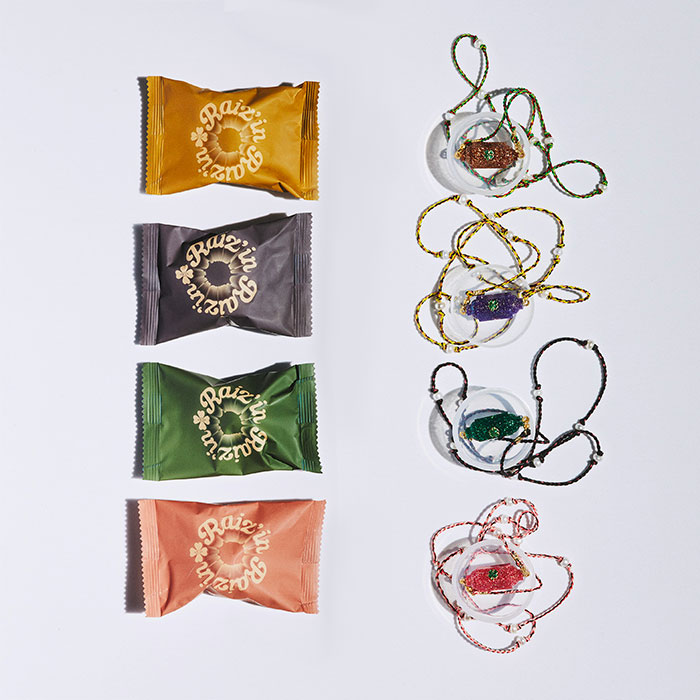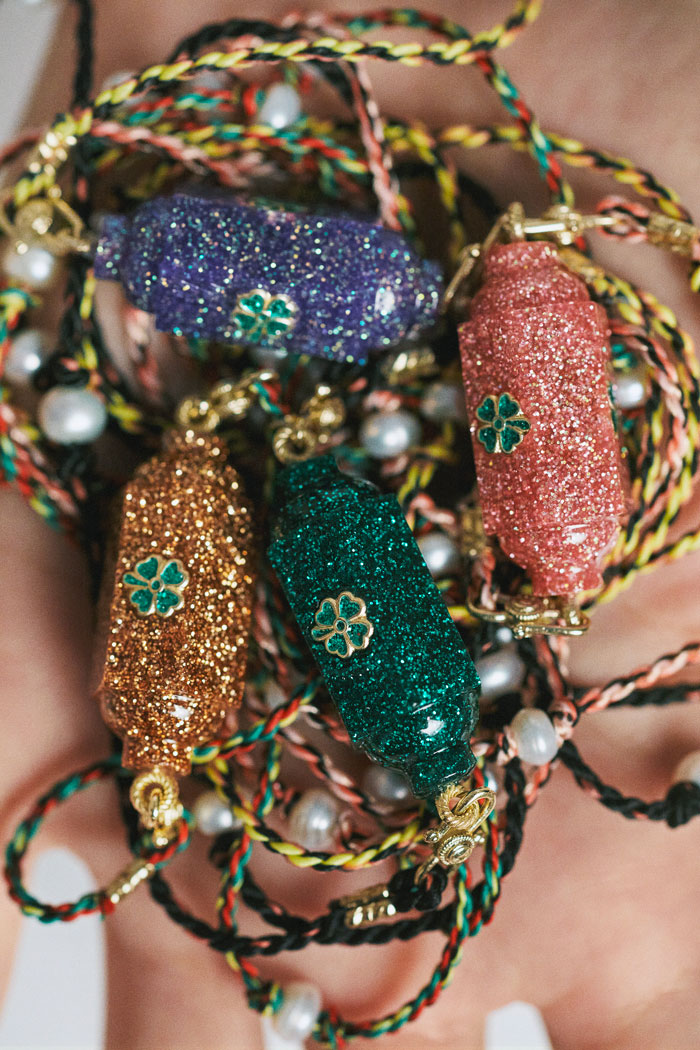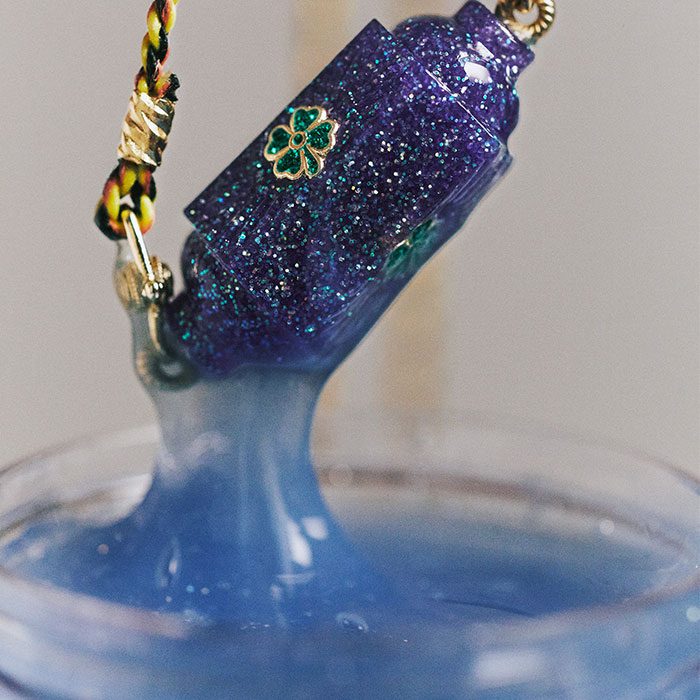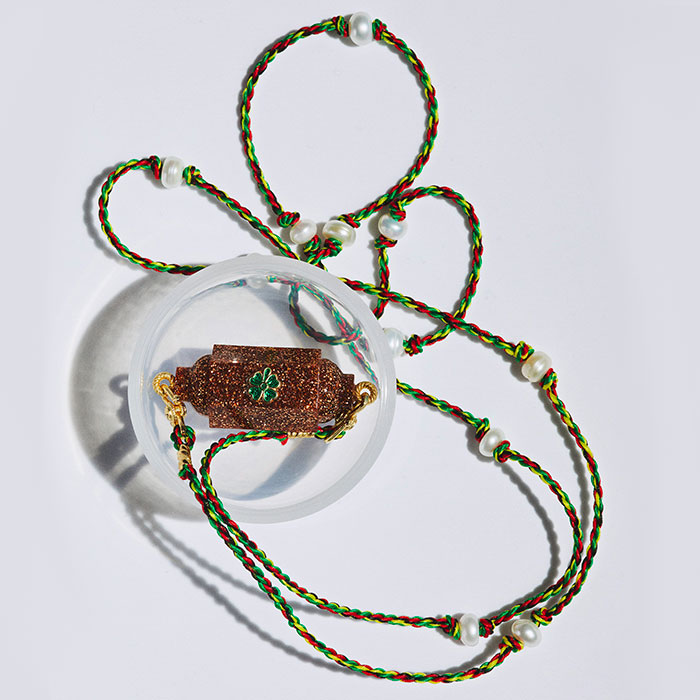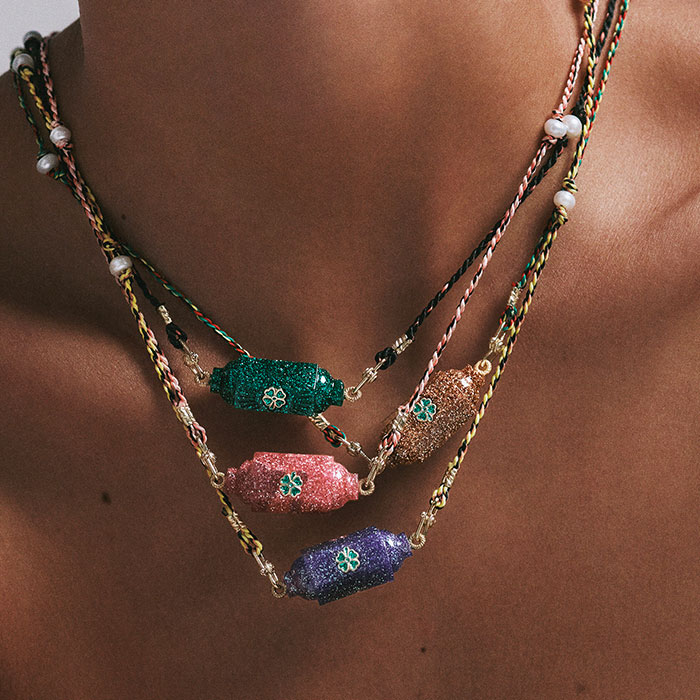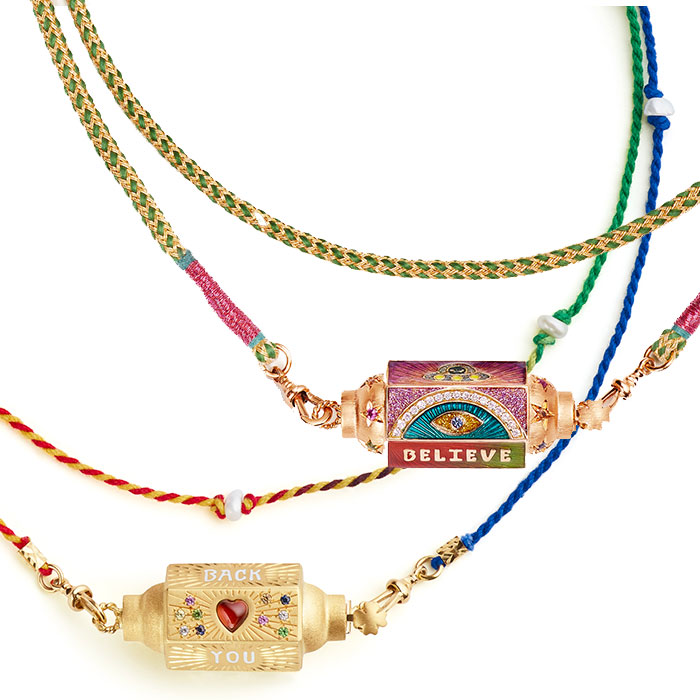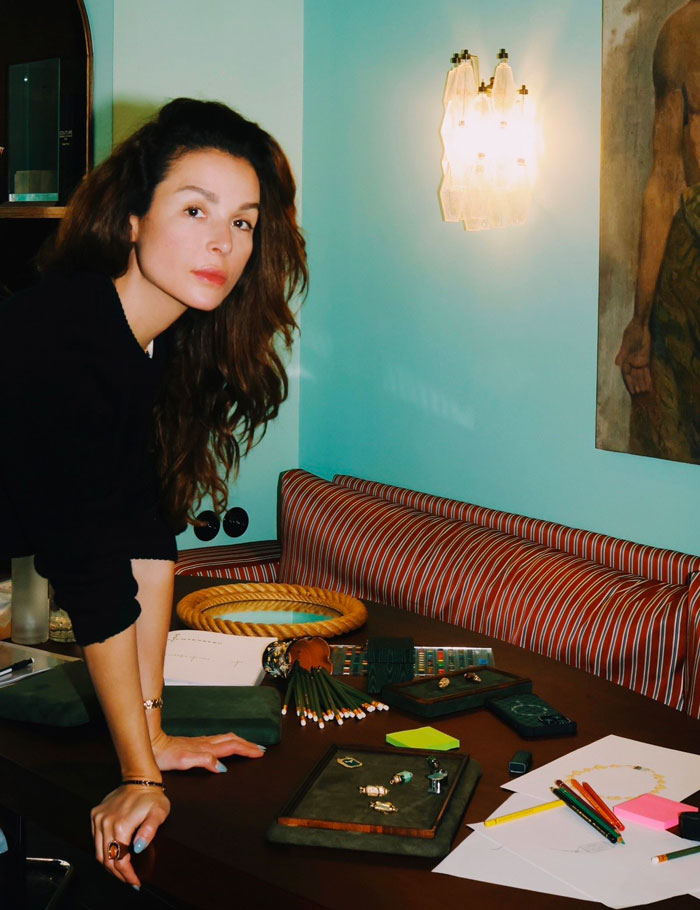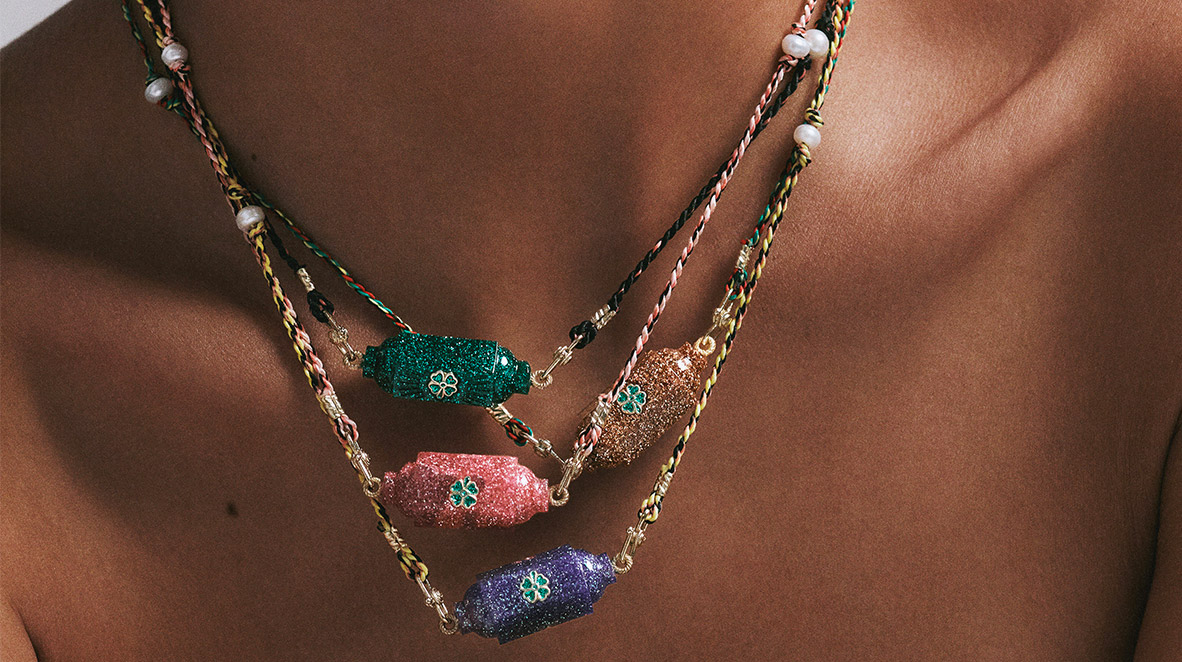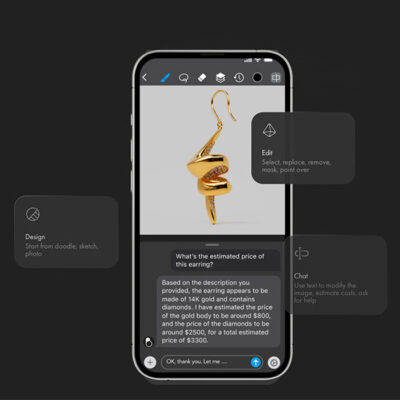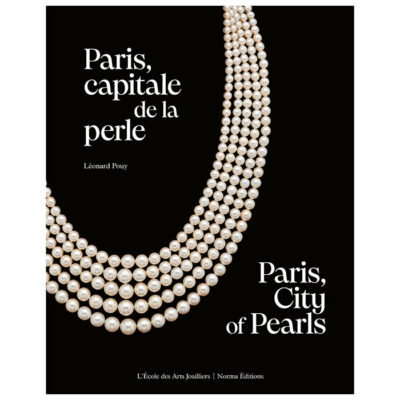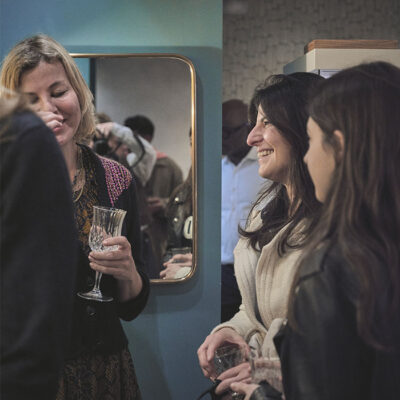Business
14 July 2023
Share
Marie Lichtenberg’s original way of dealing with counterfeiting
Marie Lichtenberg’s enamel pendant, the “Locket”, is one of the most copied jewelry pieces. To ridicule the counterfeiters, the Parisian designer has just launched “original copies” called “Raiz’In”.
By Sandrine Merle.
Sandrine Merle. What do you mean by “a real copy of the “Locket”, the original” of which you sold 3,000 copies in 3 days?
Marie Lichtenberg. Instead of being made of enamel, these new Lockets are made of glittery food-grade resin. The cord is made of polyester thread. Manufactured partly in France and Bulgaria, and partially handmade, they are sold for €190. This idea of real copies was born a little over two years ago in response to those flooding the market with counterfeits and those who buy them. It’s not a more affordable version of my Locket, but rather a copy of my own design. It wasn’t feasible to make money from it, so I donate a portion of the profits to the Rafaël Institute. A few days after their launch, they were already sold out, and I don’t plan to restock them: Raiz’In is a capsule collection that will only return once a year, or even every 2 years.
S.-M. Your enameled Locket, the brand’s iconic jewel, was copied thousands of times before it became such a phenomenal success.
Marie Lichtenberg. The first enamel copies of the Locket appeared barely a month and a half after the launch, which took place the day before the lockdown. They came from the only part of the world not under lockdown: China; you could buy 30 of them for €20 on Ali Express. It’s fair to say that we were taken by surprise, because in the middle of the lockdown, filing patents took an incredible amount of time, and our production workshops in India were closed. Today, I know that this is an unfortunate part of business life.
S.-M. Have these counterfeits endangered your brand?
Marie Lichtenberg. The brand was profitable from the first months, so I had the money to defend myself. In 4 years, I spent at least 200,000 euros, not counting the patent applications (to protect ourselves in advance) or the time spent compiling the files. The first court decisions are only starting to come in today… It’s an endless job (we just discovered warehouses filled with Lockets) because the legislation differs from country to country. We also give up on certain procedures because they are too burdensome. For me, counterfeiting is the new cocaine; it’s a very easy way to launder money. So by donating a portion of the profits to the Rafaël Institute, I’m countering the situation: for once, it’s serving something positive.
S.-M. You wrote a press release full of humor, including this: “thanks to those who admire them so much that they copy them without any scruples,” and you dedicate this collection to them.
Marie Lichtenberg. In my case, counterfeiting was so aggressive that it canonized my Locket. It also forced me to move faster than planned, to push myself, to always stay one step ahead: I had to rapidly develop production and upscale it so that even very strong counterfeiters couldn’t keep up… I refined my opening systems and hingesand started using artisanal techniques impossible to replicate by machines, such as guilloche. The result: their copies never look like more than just copies.
S.-M. Copying seems inevitable when you have success or expertise.
Marie Lichtenberg. It can go quite far. But when all’s said and done, it’s almost like a game: if a new product isn’t counterfeited, I’m almost worried!
Related article:


